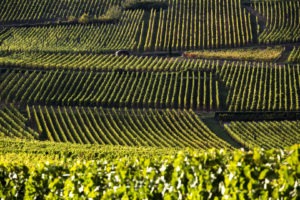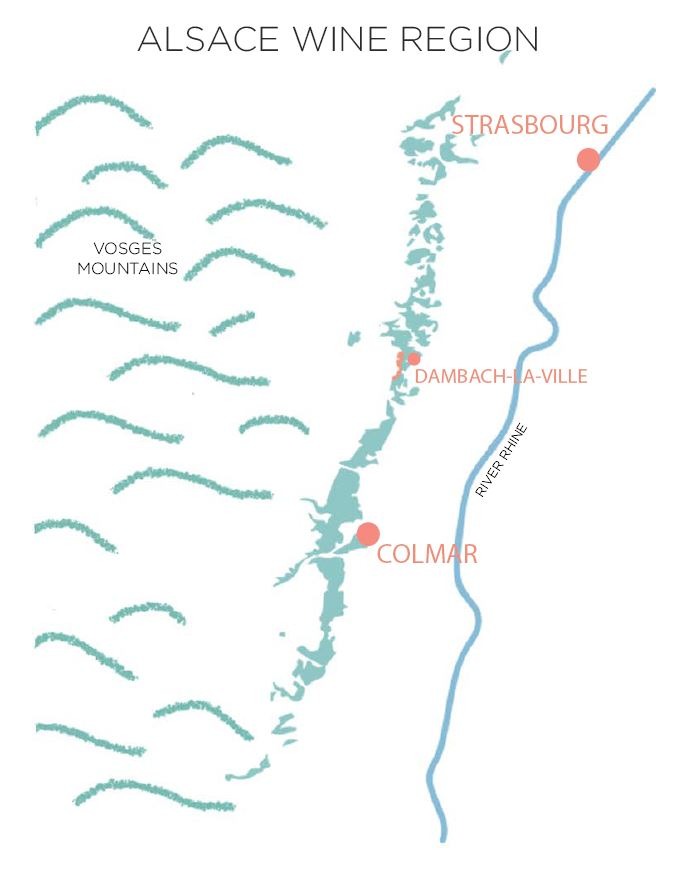Alsace Wine Region – 2017 Vintage Update
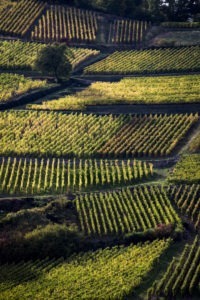 It’s Sunday 22nd of October and the Alsace 2017 vintage is harvested and safely in cellars up and down the wine route. This includes the late harvest wines, the Vendanges Tardives and the Selection de Grains Nobles.
It’s Sunday 22nd of October and the Alsace 2017 vintage is harvested and safely in cellars up and down the wine route. This includes the late harvest wines, the Vendanges Tardives and the Selection de Grains Nobles.
Back In Alsace had the good fortune to visit ten winemakers during the last days of the harvest, which gave us the opportunity to piece together the collective verdict on the 2017-growing season. We also participated and snipped quite a few bunches of grapes on the slopes of the Grand Cru Kaefferkopf and Marckrain vineyards.
Within the community, the general view is that 2017 will prove to be a very good to excellent vintage. Growing conditions were the best for several years. The cold weather of December and January encouraged the important dormancy period for the vines. At the Colmar weather station, 56 days of sub zero temperatures were recorded during these two months. Spring came early and was consistently warm. This proved a challenge as the early growth was hit by morning frosts on the 19-21st April. The frosts were widespread but their severity was localised to certain sectors, especially the Colmar pocket, and did most damage on the lower slopes and the plain.
The late spring and summer period was warmer, sunnier and rainier than average. The bouts of rain were concentrated across a few days that were interspersed with long dry periods. These summer conditions brought on early maturity and the picking season started on one of the earliest recorded dates, August 21st. What then followed were almost perfect harvest conditions; a mostly dry period with cool weather right through September.
The season was perfectly extended with the best conditions for the late harvest wines. Cool evenings to conserve the acidity in the grapes, humid wet mornings to encourage noble rot and Indian summer afternoons to allow dry concentration of the berries. 2017 should produce the highest quality late harvest wines in maybe ten years, but with a reduced quantity.
The prediction for the total yield in the Alsace wine region in 2017 is again less than a million hectoliters, in line with lower vintages of 2013, 2014 and 2015. This comes mostly from the impact of these late April frosts.
Winemaker’s Vintage Report
Back In Alsace would like to warmly thank Florian Beck-Hartweg for sharing weekly reports during the 2017 harvest. Together with his wife Mathilde, the family work 4.5 hectares of organic vineyards around Dambach-La-Ville, including parcelles on the Frankstein Grand Cru. The town of Dambach-La-Ville sits on the Alsace wine route in the Bas Rhin department, approximately 50 km south of Strasbourg.
Florian’s weekly bulletins, below, provide an interesting snapshot of how the harvest period developed for this particular winemaker.
Florian and Mathilde have just recently revamped their web site, including an English version and you can find that here (https://beckhartweg.fr/en/ )
Harvest Report Bulletin #1 20th September
 Alsace had a particularly early debut to the grape harvest, the official start date for cremants was August 21st, and August 30th for the other wines. The early ripening across all varieties was due to a combination of the early onset of a warm spring and the near perfect weather in August. The frosts in late April had a certain impact on reducing yields, specifically with Gewürztraminer, and more generally in the vineyards situated on the lower slopes and the plain.
Alsace had a particularly early debut to the grape harvest, the official start date for cremants was August 21st, and August 30th for the other wines. The early ripening across all varieties was due to a combination of the early onset of a warm spring and the near perfect weather in August. The frosts in late April had a certain impact on reducing yields, specifically with Gewürztraminer, and more generally in the vineyards situated on the lower slopes and the plain.
The fruit for the cremants was harvested and brought in by the end of August. Cooler refreshing weather set in as we moved into September. This allowed us to avoid over ripening of the grapes and stopped the wasps and drosophila attacking the fruit. But mainly this provided the right conditions to arrive at a perfect maturity combined with good acidity. We started the main harvest on the 4th September with the nicely advanced Pinot Noir and also with the Gewürztraminer, which was already ripe due to the reduced yields. With the fresh, cool, dry weather settling in, we had the opportunity to get the timing right in harvesting each parcelle (plot) just at the right moment. By the 20th September we had harvested around 60% of our vines. All the juices (pressed, maceration) tasted nicely balanced, with a beautiful, ripe acidity and were mostly very pure due to the absence of over ripeness. Everything that we love!
Harvest Report Bulletin #2 28th September
 Looking back, we were able to pause for a few days before the 20th September, as the parcelles with the riper grapes were already harvested and the weather conditions were perfect to bring on the maturity/ripeness in the other parcelles.
Looking back, we were able to pause for a few days before the 20th September, as the parcelles with the riper grapes were already harvested and the weather conditions were perfect to bring on the maturity/ripeness in the other parcelles.
That weekend brought some limited rain and a beautiful freshness throughout the vineyards. We were patient and let this dry out, and then perfect-ripening conditions arrived in the middle of the week, with morning dew and dry sunny afternoons. We took advantage of these conditions to harvest some terroirs that are generally later ripening on the volcanic and loam soils, followed by the first Riesling’s.
 Ripeness can develop very quickly with Riesling so we decided to wait only a few days for optimal maturity to set in. We quickly moved on during the 25th and 26th to pick the Rieslings from the Frankstein Grand Cru and the Dambach-La-Ville village parcelles. Ripeness set in rapidly and this signalled that we only needed to hold back on anything destined for a vendange tardive cuveé. Which is the case for a parcelle of Gewurztraminer, where we hope the weather conditions work out.
Ripeness can develop very quickly with Riesling so we decided to wait only a few days for optimal maturity to set in. We quickly moved on during the 25th and 26th to pick the Rieslings from the Frankstein Grand Cru and the Dambach-La-Ville village parcelles. Ripeness set in rapidly and this signalled that we only needed to hold back on anything destined for a vendange tardive cuveé. Which is the case for a parcelle of Gewurztraminer, where we hope the weather conditions work out.
The pressed juice tastes just right for this early stage of winemaking, with beautiful salinity and acidity. There is already an obvious differentiation between the various terroirs. The equilibriums are just perfect!!
Harvest Report Bulletin #3 2nd October
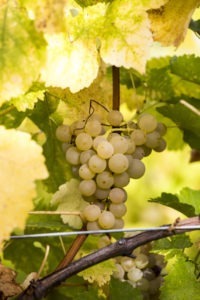
That’s harvest finished for us already, except for the late harvest, vendange tardive.
Lets look back to the 25th and 26th September when we brought in our Riesling’s from the two different terroirs, the village appellation Dambach-La-Ville and the parcelles on the Frankstein Grand Cru. Its great to confirm that these two cuveés taste very pure and crystalline, exactly what we look for from these granitic soils.
And today we are looking at a cherry on the top of the cake for this harvest. An old parcelle of Gewurztraminer planted by my grandfather, which we expect to go on and develop and further ripen and end up just perfect for a cuveé of vendange tardive. That’s a lot of AND’s. This needs some patience and the right weather to bring about the perfect degree of over ripeness. We will see what happens.
Overall, we are really happy with the 2017 harvest, especially with that long spell of fresh and dry weather in September. It allowed us to choose the best harvest date for each parcelle and helped to guarantee optimal grape maturity and equilibrium.
The 2017 vintage looks like it will meet our high expectations following a generally good growing season. These expectations may even be exceeded due to the excellent and fresh September weather.
At the start of October we moved from the vineyard to the cellar, where the wines have started their slow fermentation and gentle ageing process. It’s always interesting to see how a vintage develops and starts to define itself. Following the 2017 growing season we have no doubt that the wines from the range of Alsace terroirs are safely in the winemakers cellars and already set on their way to a high quality vintage.
Harvest Report Bulletin #4 18th October
Finally we have the verdict on whether the late harvest, vendange tardive, will work out………………………………
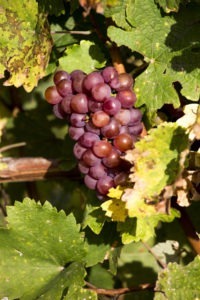 A magnificent final firework display for this years harvest, with a superb vendange tardive picked and brought into the winery this afternoon. Our parcelle of old vines on the Lanzenberg lieu-dit, produced very small grapes with full maturity. Patience during these near perfect weather conditions paid off nicely. Our approach in managing low vigour in the vines combined with the very dry conditions in this lieu-dit, enabled the maturity to come through with passerillage rather than with the effect of botrytis. Passerillage concentrates the sugars by drying the grapes on the vine. We prefer to make any moelleux (medium sweet) wines with a restricted sugar development. This helps to produce a wine with a finer definition linked to the terroir and a certain degree of aromatic and saline complexity. The cool nights in September and October ensured a good level of acidity that will balance the levels of sweetness in this wine. The yield was very low around 5hl/ha and it would have been great to make a lot more, but you can’t have everything, quality AND quantity in these precious late harvest wines.
A magnificent final firework display for this years harvest, with a superb vendange tardive picked and brought into the winery this afternoon. Our parcelle of old vines on the Lanzenberg lieu-dit, produced very small grapes with full maturity. Patience during these near perfect weather conditions paid off nicely. Our approach in managing low vigour in the vines combined with the very dry conditions in this lieu-dit, enabled the maturity to come through with passerillage rather than with the effect of botrytis. Passerillage concentrates the sugars by drying the grapes on the vine. We prefer to make any moelleux (medium sweet) wines with a restricted sugar development. This helps to produce a wine with a finer definition linked to the terroir and a certain degree of aromatic and saline complexity. The cool nights in September and October ensured a good level of acidity that will balance the levels of sweetness in this wine. The yield was very low around 5hl/ha and it would have been great to make a lot more, but you can’t have everything, quality AND quantity in these precious late harvest wines.
Now the focus is on the cellar work and a gradual start to post harvest vineyard management…

